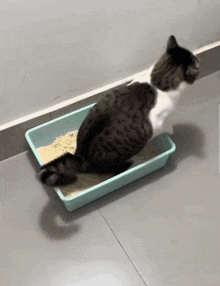With the start of a new school year comes more work, new worries, and possibly longer tests. It is still common today for students to lack the fundamentals of studying and how to do it effectively, despite the notes and lessons they receive in school. To kick off the school year on the right foot, here are some ways to study for your exams.
1. Feynman Technique: This study method is known to be the most effective method for developing deep understanding. This method is a four-step process that rejects auto-mated recall in favor of true comprehension.
- Step 1: Pick a topic or subject you want to learn.
- Step 2: Teach everything you learned to someone else.
- Step 3: Fill in the gaps. With this step, you are supposed to go back to studying and try learning any information you forgot or topics you didn't understand that well, hone in on your weaknesses, and turn them into strengths.
- Step 4: Simplify. For this step, you need to break down everything you learned into its simplest form. Act as if you are explaining this topic to a five-year-old. How would you break everything down for them to understand?
This study method can be very effective to do with a friend or in a study group because it can provide you with a deeper understanding and be more fun and engaging than just reading a textbook.
 Image Credit: Cottonbro studio, Pexels.com
Image Credit: Cottonbro studio, Pexels.com
2. Active Recall: There are many ways to do active recall. This method mainly involves retrieving information from your memory log.
You can do this by taking a topic or subject you want to learn and creating questions based on that topic and then repeatedly testing yourself on those questions or by using flashcards to effectively remember the information you are learning. When using this method, you are forcing your brain to retrieve information and it better ensures active learning rather than passive learning. Which makes you significantly more likely to remember the information you are learning.
3. Pomodoro Study Method: This method is a time management technique that uses a timer to break down your studies into 25 or 45-minute increments that are called Pomodoro sessions and then, after those sessions, you take a 5 or 15-minute break during which you completely distance yourself from the study topic. This study technique can help you map out your daily tasks and stop you from feeling so burnt out. This technique is not meant for prolonged, uninterrupted focusing, but it also allows for easy tracking of the amount of time spent on each task.
 Image Credit: Nicole Berro, Pexels.com
Image Credit: Nicole Berro, Pexels.com
4. The Flowtime Method: This technique mainly involves fully immersing yourself into a topic and then taking breaks once it feels natural to you, rather than time-blocking each task. For this method, a person will focus on only one task at a time.
Once you start working, do not set a timer. Instead, keep working until you finish a task or until you feel you need a break. You just need to track the start and end times, and any interruptions to your work. So that it is easier for you to be aware of them and reduce interruptions in the future. Then you decide how long you want your break to be and set a timer for your break. It helps to keep a spreadsheet or chart of your time to better track your improvements. This method allows more freedom to adjust to your schedule and fully immerse yourself in a topic.
 Image Credit: Christina Morillo, Pexels.com
Image Credit: Christina Morillo, Pexels.com
5. Self-Quizing: The best way to get ready for a quiz is to answer quiz questions and create test questions for yourself. Think about the types of questions you think will be on the test and incorporate them into your study sessions.
You will feel more prepared once you get a feel for what questions will be on the test and get better practice. Students have always been known to remember testing materials for longer periods of time than material learned through repeatedly reading or studying. This testing effect allows your brain to better store the information in your long-term memory bank.
6. Paraphrasing and Reflecting: In order for you to actually retain the key information you need to learn, just reading the information won't be enough. Instead, the best method after you've learned something is to paraphrase what you've learned into your own words and reflect on what you've learned to deepen your understanding of the topic.
Paraphrasing ensures deeper comprehension of what you learned and helps you better break down complex topics. Having a powerful alternative to using direct quotes can also make your essays appear better and improve your level of reading comprehension.
 Image Credit: Valda Karpovich, Pexels.com
Image Credit: Valda Karpovich, Pexels.com
7. Leitner System: This study method is a simple yet effective technique that uses flashcards to maximize memorization. To do this, you need to write your questions on the front of the flashcard and your answers on the back, then once your flashcards are ready, get three "Leitner Boxes" big enough to hold all your cards and name them Box 1,2, and 3.
When you are studying, start with box 1 and try retrieving the information on the cards. If you do retrieve that information, put the card in box 2. If you don't keep them in Box 1, and then repeat this system until you've reviewed all the cards in the box. After that, you will review each flashcard on the same system in time intervals..
8. \Spaced Repetition: This study method is based on spacing out short study sessions over a set period of time before repeating them again. This method keeps you more engaged during study sessions and allows your learning to be stored in your long-term memory bank. This evidence-based technique has been proven to help students learn better by including short review sessions.
It gives students more time actually to process new information. Various research conducted by the University of Leicester and York University in Toronto has shown that students who use the spaced repetition method score higher on tests and remember information for longer periods of time.
.jpg) Image Credit: cottonbro studio, Pexels.com
Image Credit: cottonbro studio, Pexels.com
9. Mind Maps: Mind maps are a note-taking method particularly meant for visual learners where you note down the central topic of the information you are writing in the center work outwards and add points that connect to this topic. This flexible layout allows for brain connections by creating links between thoughts to create a bigger picture and making information easier to retrieve in different contexts.
Scientists even suggest that there is a 10%-15% increase in retention when using mind maps. Mind Mapping allows you to easily plan out your notes and structure out important facts and how they are linked.
10. Visual Aids: Visual aids can be a great technique for people who have a hard time understanding a topic until they actually see it all laid out. Using things like diagrams and YouTube videos can better help you remember complex information in a simple way.
The best way to ensure something is stored in your long-term memory log is to pair concepts with meaningful images. Visuals help you better make sense of the content and direct your attention to a certain topic. These visuals also affect your brain on a cognitive level and stimulate your imagination, which enables your brain to better process information.
 Image Credit: Julia M Cameron, Pexels.com
Image Credit: Julia M Cameron, Pexels.com
Having to study for a big exam can be a lot of work, but there are ways for you to get the most out of learning without burning yourself out. Learning new things doesn't have to feel hard or overwhelming and with hard work and time you may just end up feeling like a pro at something you'd always thought you'd be an amateur at.

















